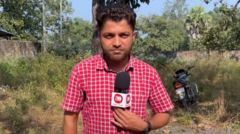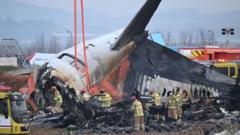The body of Mukesh Chandrakar, a 32-year-old journalist known for exposing corruption, was found in a septic tank in Chhattisgarh state after he went missing on New Year's Day. Following police investigation, three arrests were made, sparking outrage and demands for accountability from various media watchdogs and local journalists.
Shocking Discovery: Missing Journalist Found Dead in Septic Tank in Chhattisgarh

Shocking Discovery: Missing Journalist Found Dead in Septic Tank in Chhattisgarh
Mukesh Chandrakar's body was uncovered after a police investigation, prompting demands for justice from media organizations and local protests.
The body of an Indian journalist known for his investigations into alleged corruption was tragically discovered in a septic tank in the Bijapur area of Chhattisgarh state. Mukesh Chandrakar, 32, had been missing since New Year's Day, prompting his family to file a complaint with local police.
On Friday, investigative officers located his remains after tracing his mobile phone to a road construction contractor's property. Initially, when police searched the site on January 2, they found no evidence, but a thorough inspection the following day led to the gruesome discovery of Chandrakar's body, hidden beneath concrete slabs covering the septic tank.
According to police reports, Mukesh’s body bore significant injuries reminiscent of a brutal blunt-force attack. Chandrakar was a freelance journalist who had exposed corruption in public works and managed a popular YouTube channel named Bastar Junction. His death has raised significant alarm, leading the Press Council of India to request a comprehensive report regarding the circumstances surrounding the case.
Chhattisgarh's Chief Minister expressed sadness over Chandrakar's untimely death, promising a dedicated investigation team to delve into the matter. In connection with the murder, three suspects have been arrested, including one of Chandrakar's relatives, while the primary suspect, the property owner, remains at large.
The death of Mukesh Chandrakar highlights the ongoing peril faced by journalists in India, particularly those reporting on corruption and environmental issues. This incident follows a troubling trend, as media watchdogs report that an average of three to four journalists are killed annually in India due to their work, making it a perilous environment for the press. Following the news of Chandrakar's murder, local journalists have organized protests, advocating for strict action against those responsible and pushing for greater protections for reporters.




















